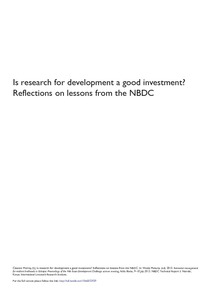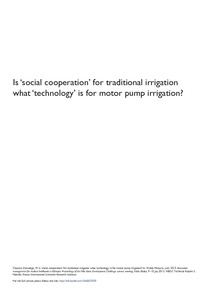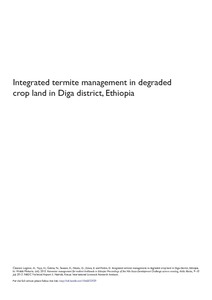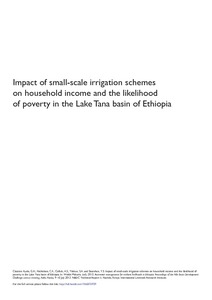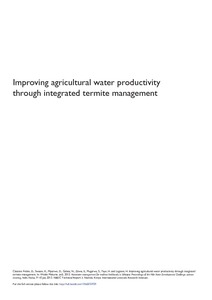Location
Vision, mission and strategy
ILRI's strategy 2013-2022 was approved in December 2012. It emerged from a wide processof consultation and engagement.
ILRI envisions... a world where all people have access to enough food and livelihood options to fulfil their potential.
ILRI’s mission is... to improve food and nutritional security and to reduce poverty in developing countries through research for efficient, safe and sustainable use of livestock—ensuring better lives through livestock.
ILRI’s three strategic objectives are:
- with partners, to develop, test, adapt and promote science-based practices that—being sustainable and scalable—achieve better lives through livestock.
- with partners,to provide compelling scientific evidence in ways that persuade decision-makers—from farms to boardrooms and parliaments—that smarter policies and bigger livestock investments can deliver significant socio-economic, health and environmental dividends to both poor nations and households.
- with partners,to increase capacity among ILRI’s key stakeholders to make better use of livestock science and investments for better lives through livestock.
This is ILRI’s second ten-year strategy. It incorporates a number of changes, many based on learning from the previous strategy (2000–2010, initially produced in 2000 and modified in 2002), an interim strategy (2011–2012) and an assessment of the external and internal environments in which the institute operates.
Members:
Resources
Displaying 381 - 385 of 1152Is research for development a good investment? Reflections on lessons from the NBDC
‘Integrated Research for Development’ has been promoted as an approach to research and development in natural resources management that is most likely to lead to positive impacts. It has various acronyms, e.g. ‘INRM’ and ‘R4D.’ It was the underlying theory of the SSA Challenge Program, managed by FARA and implemented by CGIAR centres and African partners. R4D was a basis for the first phase of CPWF, though in a rudimentary form. It was adopted as the theoretical basis for CPWF phase II. All six basin challenges are based on R4D, including NBDC.
Is ‘social cooperation’ for traditional irrigation what ‘technology’ is for motor pump irrigation?
This paper calls attention to the importance of social cooperation in irrigation farming. It argues that a mere focus on the technical aspect of irrigation, disregarding its social aspects undermines the long-term benefits of irrigation to rural livelihoods. This assertion draws on lessons from small-irrigation practices in Fogera, in the Blue Nile Basin of Ethiopia, where I conducted fieldwork-based qualitative research. In recent years irrigation farming has drawn a growing interest among farmers in rural Fogera.
Integrated termite management in degraded crop land in Diga district, Ethiopia
Termites are a major pest in the semi-arid and sub-humid tropics. They pose a serious threat to agricultural crops, forestry seedlings, rangelands and wooden structures. In Ethiopia the problem is particularly serious in the western part of the country, specifically in Wollega Zones of Oromia Region. In the past, several attempts were made to reduce damage caused by termites, including extensive termite mound poisoning campaigns. These interventions not only had a negative effect on the environment, but were also largely ineffective.
Impact of small-scale irrigation schemes on household income and the likelihood of poverty in the Lake Tana basin of Ethiopia
This study uses Tobit and Logit models to examine the impacts of selected small-scale irrigation schemes in the Lake Tana basin of Ethiopia on household income and the likelihood of poverty, respectively. Data for these analyses were collected from a sample of 180 households. Households using any of the four irrigation systems had statistically significantly higher mean total gross household income than households not using irrigation.
Improving agricultural water productivity through integrated termite management
Termite infestation is symptomatic of severe land degradation in many semi-arid regions of the Nile Basin. One characteristic of land degradation is low organic matter (OM) reserves in vegetative biomass and soil. One consequence is excessive rainwater depletion through non-productive evaporation and runoff leading to low agricultural water productivity and diminished livelihoods. CPWF research demonstrated that rapid restoration of pasture production is possible by providing manure through night corralling of cattle prior to re-seeding termite affected rangeland in Uganda.


